So amid the din over border control, the Senate affirms the self-evident truth that English is our national language; "It is part of our blood," Lamar Alexander, Republican of Tennessee, says. Border vigilantes call themselves Minutemen, summoning colonial Massachusetts as they apprehend Hispanics in the desert Southwest. Even undocumented immigrants invoke our Anglo founders, waving placards that read, "The Pilgrims didn't have papers."
These newcomers are well indoctrinated; four of the sample questions on our naturalization test ask about Pilgrims. Nothing in the sample exam suggests that prospective citizens need know anything that occurred on this continent before the Mayflower landed in 1620. Few Americans do, after all.
This national amnesia isn't new, but it's glaring and supremely paradoxical at a moment when politicians warn of the threat posed to our culture and identity by an invasion of immigrants from across the Mexican border. If Americans hit the books, they'd find what Al Gore would call an inconvenient truth. The early history of what is now the United States was Spanish, not English, and our denial of this heritage is rooted in age-old stereotypes that still entangle today's immigration debate.
Forget for a moment the millions of Indians who occupied this continent for 13,000 or more years before anyone else arrived, and start the clock with Europeans' presence on present-day United States soil. The first confirmed landing wasn't by Vikings, who reached Canada in about 1000, or by Columbus, who reached the Bahamas in 1492. It was by a Spaniard, Juan Ponce de León, who landed in 1513 at a lush shore he christened La Florida.
Most Americans associate the early Spanish in this hemisphere with Cortés in Mexico and Pizarro in Peru. But Spaniards pioneered the present-day United States, too. Within three decades of Ponce de León's landing, the Spanish became the first Europeans to reach the Appalachians, the Mississippi, the Grand Canyon and the Great Plains. Spanish ships sailed along the East Coast, penetrating to present-day Bangor, Me., and up the Pacific Coast as far as Oregon.
From 1528 to 1536, four castaways from a Spanish expedition, including a "black" Moor, journeyed all the way from Florida to the Gulf of California — 267 years before Lewis and Clark embarked on their much more renowned and far less arduous trek. In 1540, Francisco Vázquez de Coronado led 2,000 Spaniards and Mexican Indians across today's Arizona-Mexico border — right by the Minutemen's inaugural post — and traveled as far as central Kansas, close to the exact geographic center of what is now the continental United States. In all, Spaniards probed half of today's lower 48 states before the first English tried to colonize, at Roanoke Island, N.C.
The Spanish didn't just explore, they settled, creating the first permanent European settlement in the continental United States at St. Augustine, Fla., in 1565. Santa Fe, N.M., also predates Plymouth: later came Spanish settlements in San Antonio, Tucson, San Diego and San Francisco. The Spanish even established a Jesuit mission in Virginia's Chesapeake Bay 37 years before the founding of Jamestown in 1607.
Two iconic American stories have Spanish antecedents, too. Almost 80 years before John Smith's alleged rescue by Pocahontas, a man by the name of Juan Ortiz told of his remarkably similar rescue from execution by an Indian girl. Spaniards also held a thanksgiving, 56 years before the Pilgrims, when they feasted near St. Augustine with Florida Indians, probably on stewed pork and garbanzo beans.
The early history of Spanish North America is well documented, as is the extensive exploration by the 16th-century French and Portuguese. So why do Americans cling to a creation myth centered on one band of late-arriving English — Pilgrims who weren't even the first English to settle New England or the first Europeans to reach Plymouth Harbor? (There was a short-lived colony in Maine and the French reached Plymouth earlier.)
The easy answer is that winners write the history and the Spanish, like the French, were ultimately losers in the contest for this continent. Also, many leading American writers and historians of the early 19th century were New Englanders who elevated the Pilgrims to mythic status (the North's victory in the Civil War provided an added excuse to diminish the Virginia story). Well into the 20th century, standard histories and school texts barely mentioned the early Spanish in North America.
While it's true that our language and laws reflect English heritage, it's also true that the Spanish role was crucial. Spanish discoveries spurred the English to try settling America and paved the way for the latecomers' eventual success. Many key aspects of American history, like African slavery and the cultivation of tobacco, are rooted in the forgotten Spanish century that preceded English arrival.
There's another, less-known legacy of this early period that explains why we've written the Spanish out of our national narrative. As late as 1783, at the end of the Revolutionary War, Spain held claim to roughly half of today's continental United States (in 1775, Spanish ships even reached Alaska). As American settlers pushed out from the 13 colonies, the new nation craved Spanish land. And to justify seizing it, Americans found a handy weapon in a set of centuries-old beliefs known as the "black legend."
The legend first arose amid the religious strife and imperial rivalries of 16th-century Europe. Northern Europeans, who loathed Catholic Spain and envied its American empire, published books and gory engravings that depicted Spanish colonization as uniquely barbarous: an orgy of greed, slaughter and papist depravity, the Inquisition writ large.
Though simplistic and embellished, the legend contained elements of truth. Juan de Oñate, the conquistador who colonized New Mexico, punished Pueblo Indians by cutting off their hands and feet and then enslaving them. Hernando de Soto bound Indians in chains and neck collars and forced them to haul his army's gear across the South. Natives were thrown to attack dogs and burned alive.
But there were Spaniards of conscience in the New World, too: most notably the Dominican priest Bartolomé de Las Casas, whose defense of Indians impelled the Spanish crown to pass laws protecting natives. Also, Spanish brutality wasn't unique; English colonists committed similar atrocities. The Puritans were arguably more intolerant of natives than the Spanish and the Virginia colonists as greedy for gold as any conquistador. But none of this erased the black legend's enduring stain, not only in Europe but also in the newly formed United States.
"Anglo Americans," writes David J. Weber, the pre-eminent historian of Spanish North America, "inherited the view that Spaniards were unusually cruel, avaricious, treacherous, fanatical, superstitious, cowardly, corrupt, decadent, indolent and authoritarian."
When 19th-century jingoists revived this caricature to justify invading Spanish (and later, Mexican) territory, they added a new slur: the mixing of Spanish, African and Indian blood had created a degenerate race. To Stephen Austin, Texas's fight with Mexico was "a war of barbarism and of despotic principles, waged by the mongrel Spanish-Indian and Negro race, against civilization and the Anglo-American race." It was the manifest destiny of white Americans to seize and civilize these benighted lands, just as it was to take the territory of Indian savages.
From 1819 to 1848, the United States and its army increased the nation's area by roughly a third at Spanish and Mexican expense, including three of today's four most populous states: California, Texas and Florida. Hispanics became the first American citizens in the newly acquired Southwest territory and remained a majority in several states until the 20th century.
By then, the black legend had begun to fade. But it seems to have found new life among immigration's staunchest foes, whose rhetoric carries traces of both ancient Hispanophobia and the chauvinism of 19th-century expansionists.
Representative J. D. Hayworth of Arizona, who calls for deporting illegal immigrants and changing the Constitution so that children born to them in the United States can't claim citizenship, denounces "defeatist wimps unwilling to stand up for our culture" against alien "invasion." Those who oppose making English the official language, he adds, "reject the very notion that there is a uniquely American identity, or that, if there is one, that it is superior to any other."
Representative Tom Tancredo of Colorado, chairman of the House Immigration Reform Caucus, depicts illegal immigration as "a scourge" abetted by "a cult of multiculturalism" that has "a death grip" on this nation. "We are committing cultural suicide," Mr. Tancredo claims. "The barbarians at the gate will only need to give us a slight push, and the emaciated body of Western civilization will collapse in a heap."
ON talk radio and the Internet, foes of immigration echo the black legend more explicitly, typecasting Hispanics as indolent, a burden on the American taxpayer, greedy for benefits and jobs, prone to criminality and alien to our values — much like those degenerate Spaniards of the old Southwest and those gold-mad conquistadors who sought easy riches rather than honest toil. At the fringes, the vilification is baldly racist. In fact, cruelty to Indians seems to be the only transgression absent from the familiar package of Latin sins.
Also missing, of course, is a full awareness of the history of the 500-year Spanish presence in the Americas and its seesawing fortunes in the face of Anglo encroachment. "The Hispanic world did not come to the United States," Carlos Fuentes observes. "The United States came to the Hispanic world. It is perhaps an act of poetic justice that now the Hispanic world should return."
America has always been a diverse and fast-changing land, home to overlapping cultures and languages. It's an homage to our history, not a betrayal of it, to welcome the latest arrivals, just as the Indians did those tardy and uninvited Pilgrims who arrived in Plymouth not so long ago.

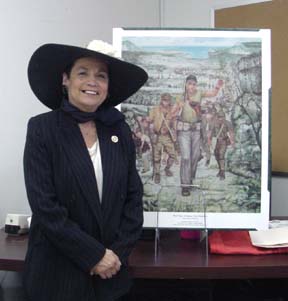
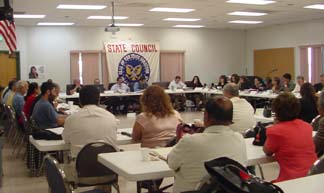 Editor:
I attended the California State LULAC Board Meeting, August 26th. I was
especially pleased to be able to join the small luncheon party and hear
more of the vision that Rosa Rosales has for LULAC. The focus, as
Rosa said "is simply education, education, education," and
she added "also raising leaders." During the general
meeting, she mentioned the greater need now, then ever, with the
increasing numbers of Spanish heritage individuals changing the
demographics of the U.S.
Editor:
I attended the California State LULAC Board Meeting, August 26th. I was
especially pleased to be able to join the small luncheon party and hear
more of the vision that Rosa Rosales has for LULAC. The focus, as
Rosa said "is simply education, education, education," and
she added "also raising leaders." During the general
meeting, she mentioned the greater need now, then ever, with the
increasing numbers of Spanish heritage individuals changing the
demographics of the U.S. 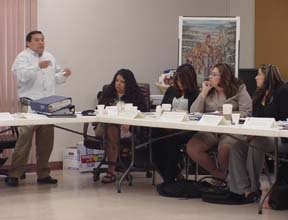 I
was surely impressed with the enthusiasm and dedication of those in
attendance. I sat next to Alex Maldonado, one of the founders of the first
LULAC chapter organized in Orange County, in 1947.
I
was surely impressed with the enthusiasm and dedication of those in
attendance. I sat next to Alex Maldonado, one of the founders of the first
LULAC chapter organized in Orange County, in 1947. 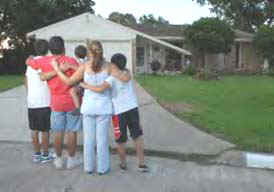 Carlos Javier Sanchez: For the Chronicle
Carlos Javier Sanchez: For the Chronicle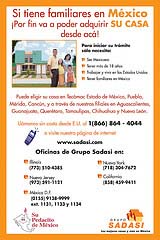
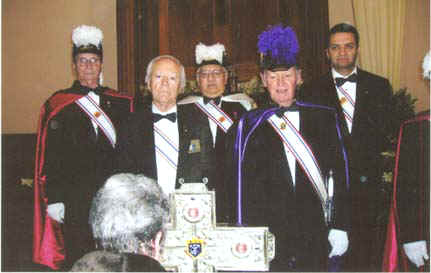
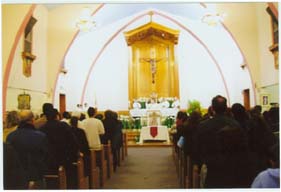 The mass was held at the beautiful church, of St.
Anne,
in the heart of Santa Ana, California. I personally became aware of the
viewing the day before and was therefore able to attend on that date,
April 28th along with five brother knights, becoming the first to share
the honor representing the Knights of Columbus, along with the California
State Deputy, Emilo Moure
and the director of media relations, Andrew T.
Walther of New Haven, Connecticut.
The mass was held at the beautiful church, of St.
Anne,
in the heart of Santa Ana, California. I personally became aware of the
viewing the day before and was therefore able to attend on that date,
April 28th along with five brother knights, becoming the first to share
the honor representing the Knights of Columbus, along with the California
State Deputy, Emilo Moure
and the director of media relations, Andrew T.
Walther of New Haven, Connecticut.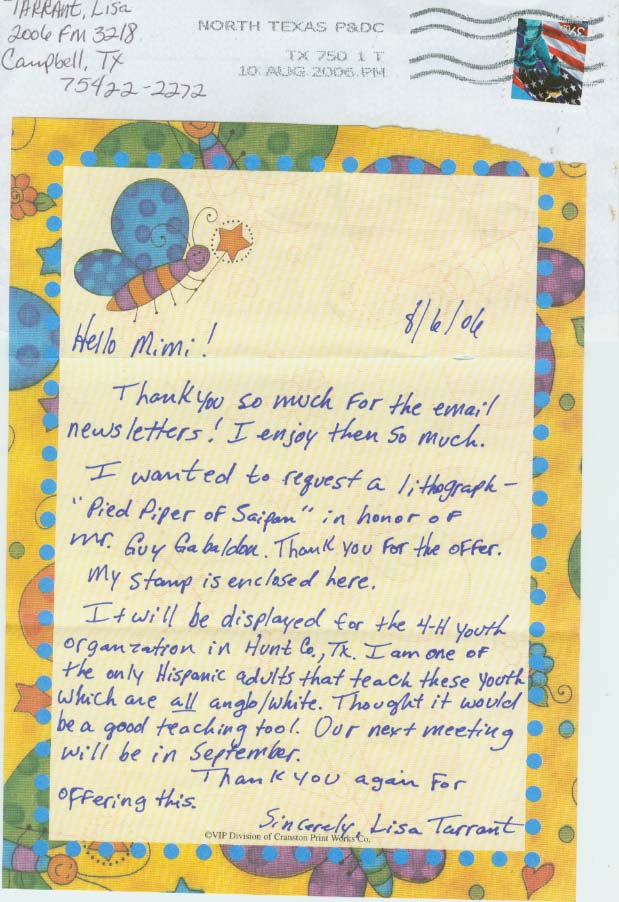
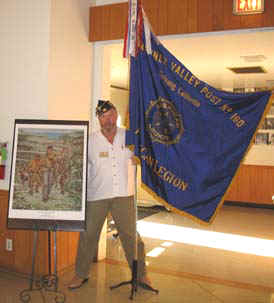
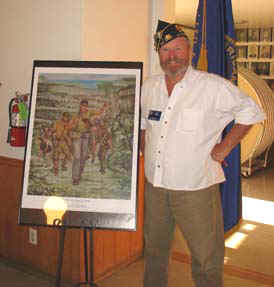

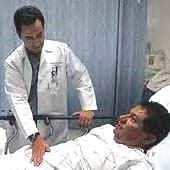 Next to
Mario Luna's hospital bed, Dr. Humberto Sauri sees a dark-green bottle.
The drink is called Sangria Señorial, but it's not wine. It's a fruity,
tart Mexican soda pop.
Next to
Mario Luna's hospital bed, Dr. Humberto Sauri sees a dark-green bottle.
The drink is called Sangria Señorial, but it's not wine. It's a fruity,
tart Mexican soda pop.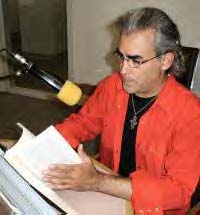 Between August 7 and August 18, 2006, the Texas Public Radio presented on-air readings of the family memoir of San Antonio author John Phillip Santos, Places Left Unfinished at the Time of Creation. The story, read by Santos himself, was broadcast on KSTX 89.1 FM. The series is archived and can be accessed at
Between August 7 and August 18, 2006, the Texas Public Radio presented on-air readings of the family memoir of San Antonio author John Phillip Santos, Places Left Unfinished at the Time of Creation. The story, read by Santos himself, was broadcast on KSTX 89.1 FM. The series is archived and can be accessed at
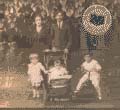 The book is a powerful memoir of Mexican-American life. Born in San Antonio in 1957, the author is a journalist and television documentary producer for CBS and the first Mexican-American Rhodes Scholar. He grew up in an extended family whose elder members remembered a Texas that had not yet become anglicized. Through their eyes, Santos revisits that time, looking deeply into the Mexican past as a way of informing the present.
The book is a powerful memoir of Mexican-American life. Born in San Antonio in 1957, the author is a journalist and television documentary producer for CBS and the first Mexican-American Rhodes Scholar. He grew up in an extended family whose elder members remembered a Texas that had not yet become anglicized. Through their eyes, Santos revisits that time, looking deeply into the Mexican past as a way of informing the present.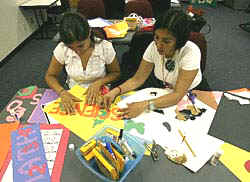 Few
Hispanic Teachers to fulfill need
Few
Hispanic Teachers to fulfill need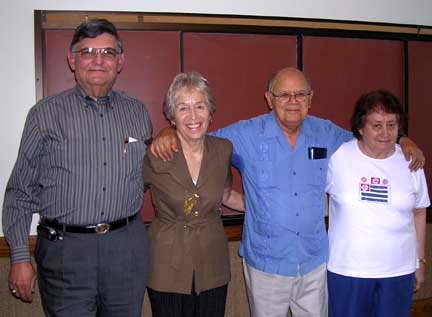 Society of Hispanic
Society of Hispanic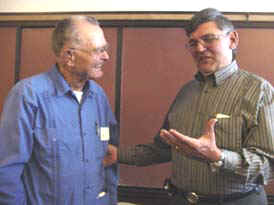
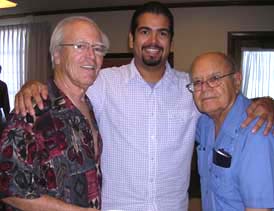
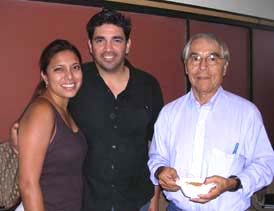
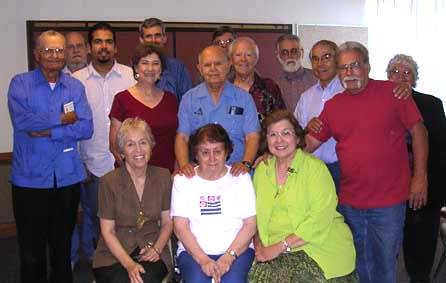
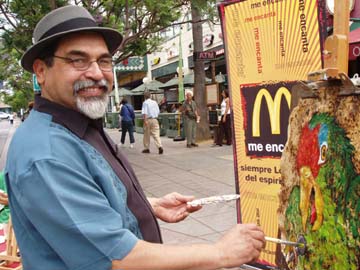
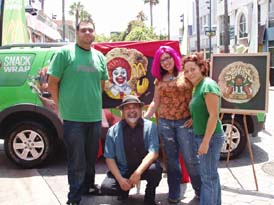
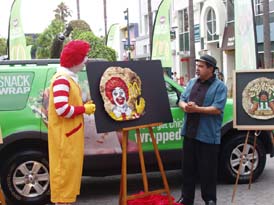
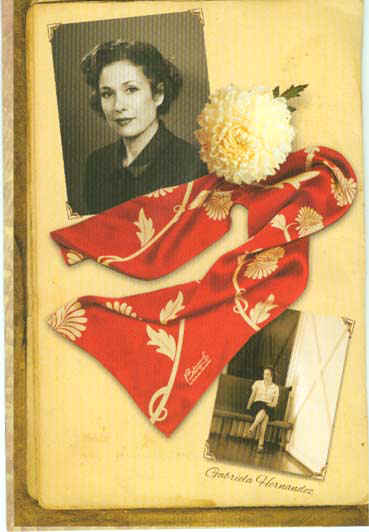
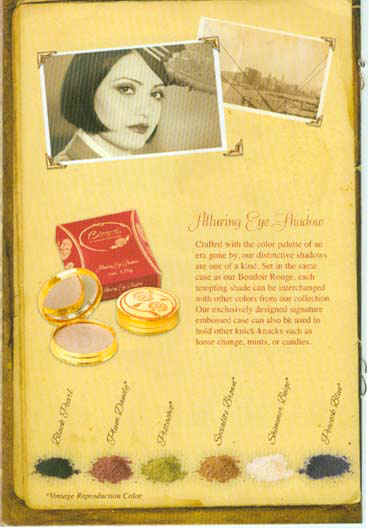
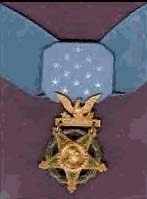 Silvestre
S. Herrera
Silvestre
S. Herrera 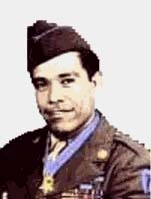 Medal of
Honor citation
Medal of
Honor citation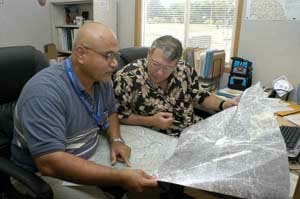

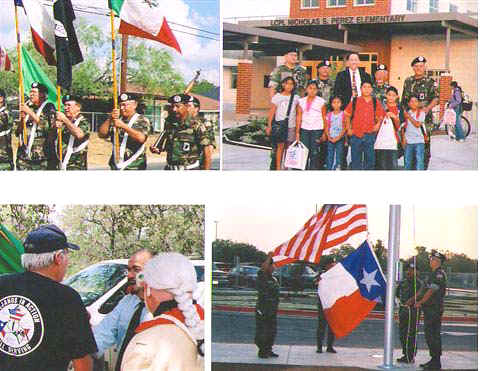
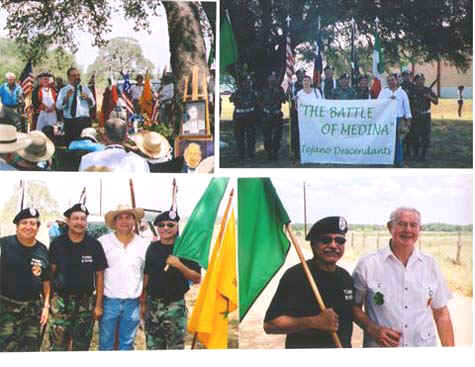
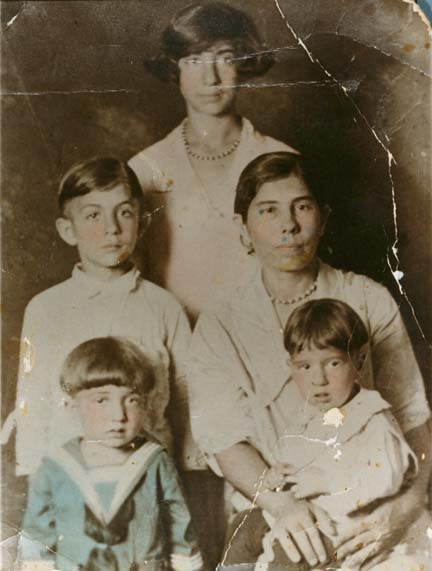
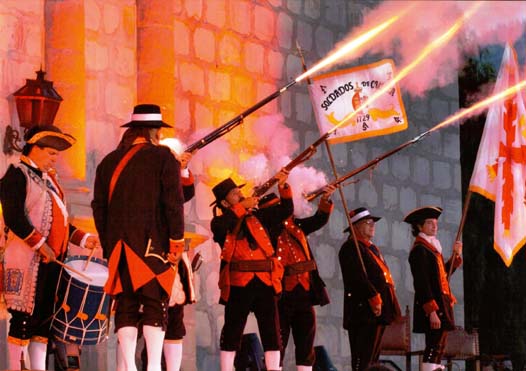
 OC
REGISTER, SHHAR/SomosPrimos, Wells Fargo,
OC
REGISTER, SHHAR/SomosPrimos, Wells Fargo, 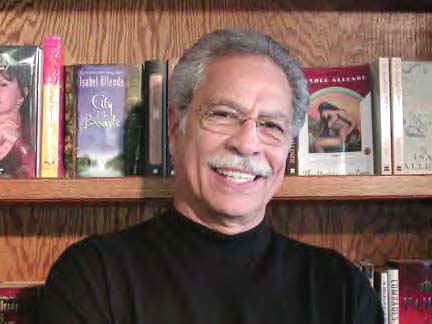
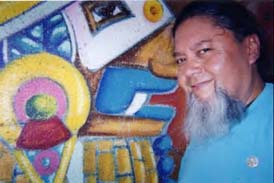
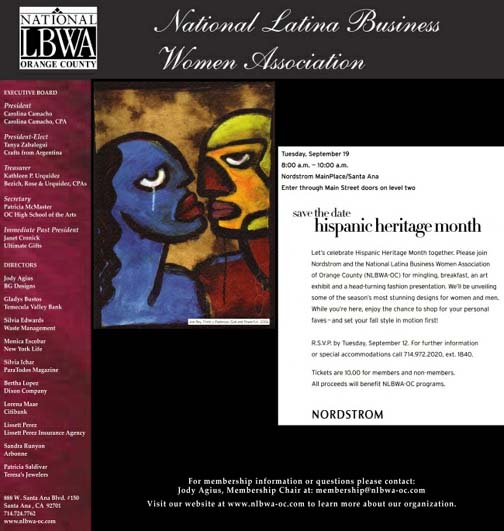
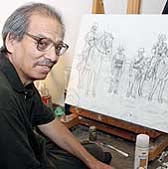 City
pauses for 'Progress'
City
pauses for 'Progress'
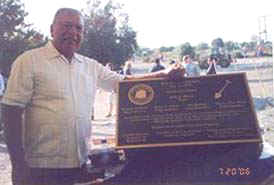
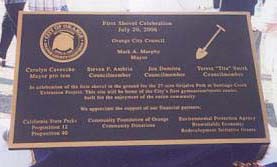 This Marker is one of 3 that gives my ancestors' recognition in the history of Orange County. To me they are trophy's for my hard work in researching my heritage. A passage in the bible states, "YOU REAP WHAT YOU SOW". I look back now, and think, if I would not have taken interest in my heritage, I know that none of this history of Orange County would come to new life. It would have remained the same. The historians before me omitted Grijalva in writing our Orange County History. To them Juan Pablo Grijalva was just a side note, nothing important.
This Marker is one of 3 that gives my ancestors' recognition in the history of Orange County. To me they are trophy's for my hard work in researching my heritage. A passage in the bible states, "YOU REAP WHAT YOU SOW". I look back now, and think, if I would not have taken interest in my heritage, I know that none of this history of Orange County would come to new life. It would have remained the same. The historians before me omitted Grijalva in writing our Orange County History. To them Juan Pablo Grijalva was just a side note, nothing important.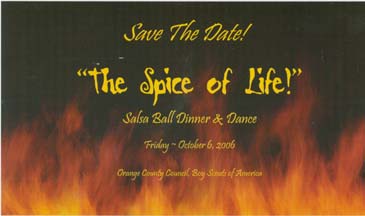
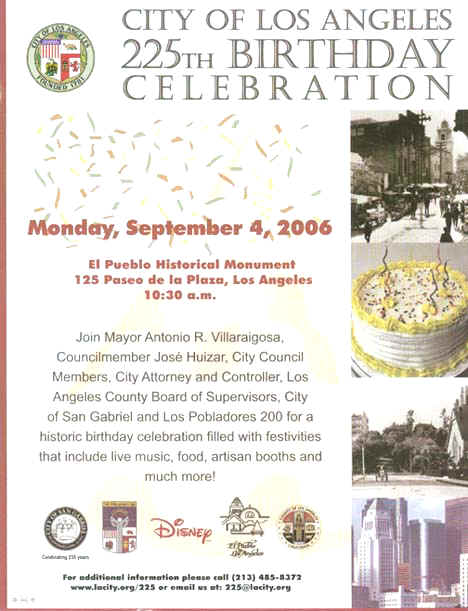
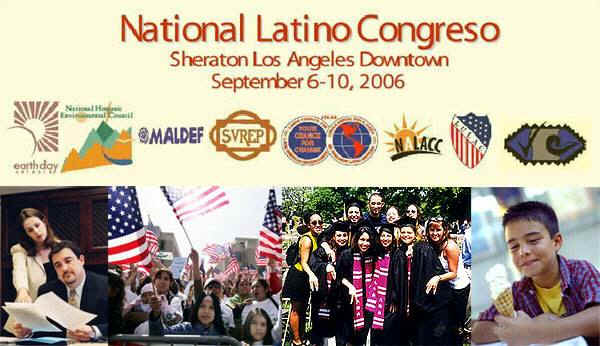
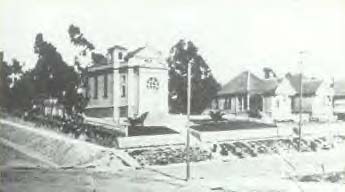 As the faithful grew in numbers, it became apparent that the parlor could not continue to serve as the church. The Dominguez children donated the land and the finances for the construction of a church to be built in memory of their parents. A committee was formed to plan the new church. The patron St. James was chosen.
As the faithful grew in numbers, it became apparent that the parlor could not continue to serve as the church. The Dominguez children donated the land and the finances for the construction of a church to be built in memory of their parents. A committee was formed to plan the new church. The patron St. James was chosen. 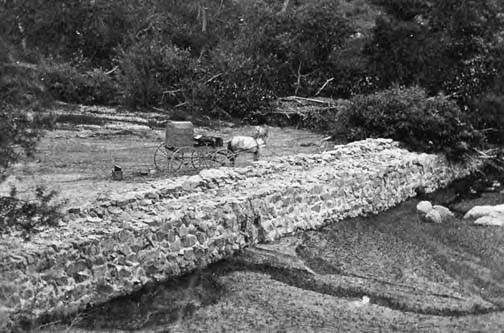
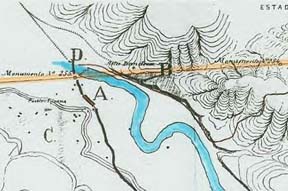
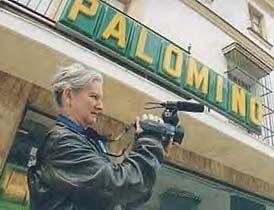
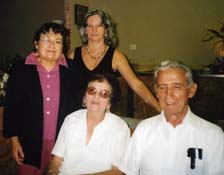
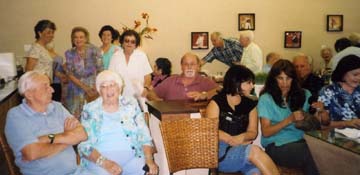
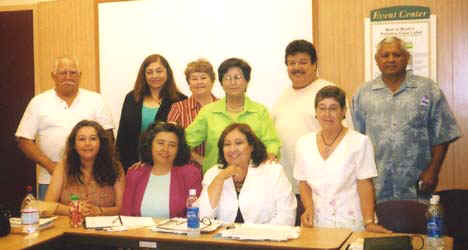
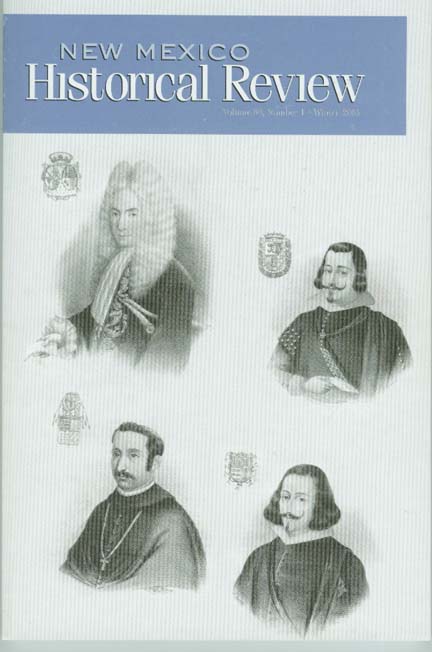
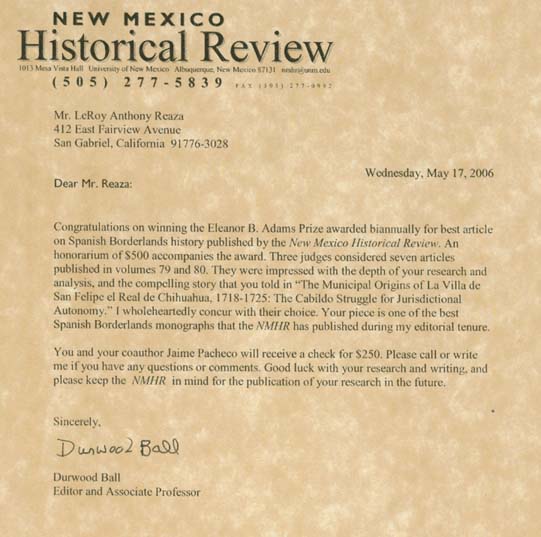
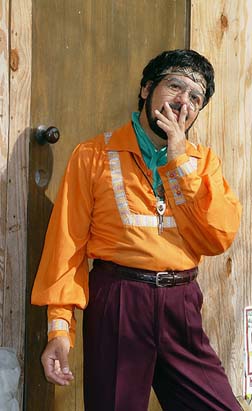
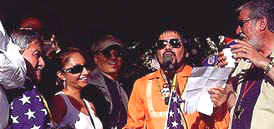
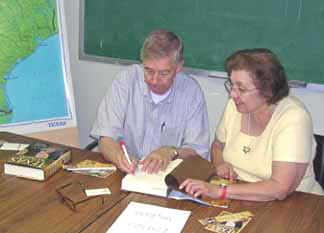 On Monday afternoon I met Dr. Louis R. Sadler, with whom I had had email
correspondence. He lectured a handful of us on the Plan de San Diego. He's
a wealth of knowledge on the goings on along the border during the Mexican
revolution. It was a joy to talk to him. More of the group had indicated
they would attend his last-minute talk, but about ten minutes before our
scheduled time, it started to pour, so most decided to stay at the main
library. His book is called: "Texas Ranger and the Mexican
Revolution--the Bloodiest Decade 1910-1920." Oh yes, Charles sent him
a little book on Charles's Sadlers which included photos and copies of
census records, etc. I don't think we have the connection, yet. Although
it is promising because Dr. Sadler is a "southern" Sadler same
as Charles's ancestors.
On Monday afternoon I met Dr. Louis R. Sadler, with whom I had had email
correspondence. He lectured a handful of us on the Plan de San Diego. He's
a wealth of knowledge on the goings on along the border during the Mexican
revolution. It was a joy to talk to him. More of the group had indicated
they would attend his last-minute talk, but about ten minutes before our
scheduled time, it started to pour, so most decided to stay at the main
library. His book is called: "Texas Ranger and the Mexican
Revolution--the Bloodiest Decade 1910-1920." Oh yes, Charles sent him
a little book on Charles's Sadlers which included photos and copies of
census records, etc. I don't think we have the connection, yet. Although
it is promising because Dr. Sadler is a "southern" Sadler same
as Charles's ancestors.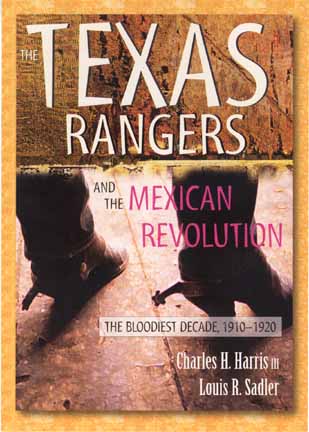 The New Mexico
State University Bookstore will host a signing for a new book by NMSU
emeritus history professors Charles H. Harris III and Louis R. Sadler from
11:30 a.m. to 1:30 p.m. Thursday, Oct. 14.
The New Mexico
State University Bookstore will host a signing for a new book by NMSU
emeritus history professors Charles H. Harris III and Louis R. Sadler from
11:30 a.m. to 1:30 p.m. Thursday, Oct. 14.
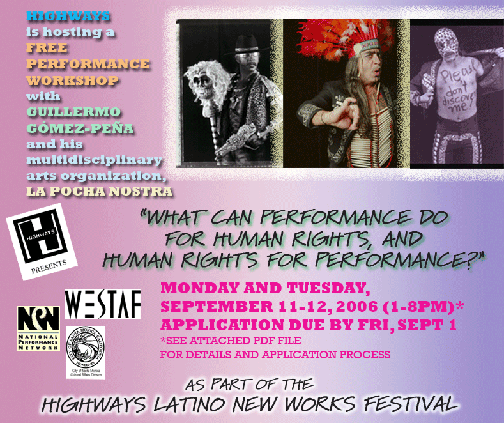
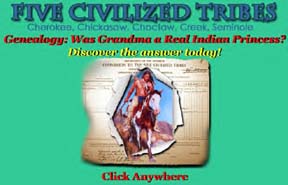

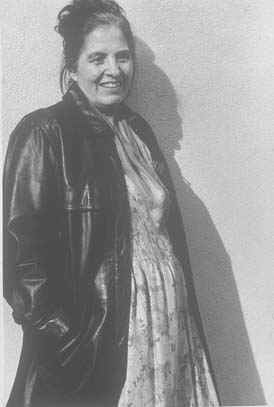 Jewish families fled Spain and scattered worldwide. My ancestors fled Spain, went to Portugal, then to the Canaries, and made their way to the New World. Hoping to find a better life away from the dangers of an Inquisition, they landed in New Mexico and remained prisoners of nomadic Indians for over two hundred years. Land grants were issued to the colonizers, and they took advantage of them.
Jewish families fled Spain and scattered worldwide. My ancestors fled Spain, went to Portugal, then to the Canaries, and made their way to the New World. Hoping to find a better life away from the dangers of an Inquisition, they landed in New Mexico and remained prisoners of nomadic Indians for over two hundred years. Land grants were issued to the colonizers, and they took advantage of them.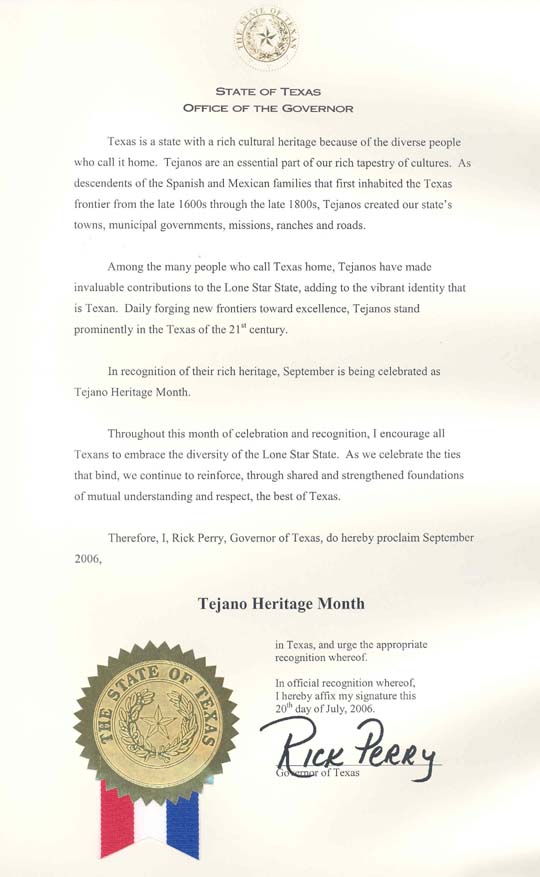
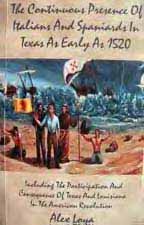 The Continuous Presence of Italians and Spaniards in Texas as Early as 1520, Including the Participation and Consequence of Texas and Louisiana in the American Revolution by Alex Loya
The Continuous Presence of Italians and Spaniards in Texas as Early as 1520, Including the Participation and Consequence of Texas and Louisiana in the American Revolution by Alex Loya
 Ernesto Uribe, a Laredo native, is the author of Tlalcoyote, a novel based on true facts about the adventures of young Rogelio Ramirez, who was captured by Comanches near El Ramireño (now Old Falcon) in South Texas.
Once on the web-Site, read the customer reviews, and if you click on the book cover it will give you an excerpt and the back cover with a picture of Ernesto Uribe, the author.
Ernesto Uribe, a Laredo native, is the author of Tlalcoyote, a novel based on true facts about the adventures of young Rogelio Ramirez, who was captured by Comanches near El Ramireño (now Old Falcon) in South Texas.
Once on the web-Site, read the customer reviews, and if you click on the book cover it will give you an excerpt and the back cover with a picture of Ernesto Uribe, the author. 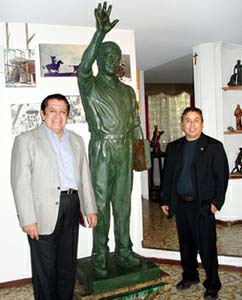
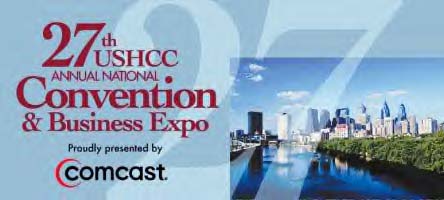
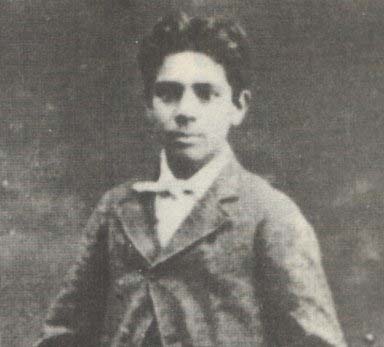 1919, and was president during much of that seven year period of revolutionary turmoil. He is remembered for guiding the passage of the Constitution of 1917 that provided rights to the poor - rights the nation still strives to enforce. On the left is the young Carranza, on the right the president. The facial features of the 10 to 12 year old Venustiano imply a mix of origins that are hidden behind the flowing beard worn by the adult Carranza.
1919, and was president during much of that seven year period of revolutionary turmoil. He is remembered for guiding the passage of the Constitution of 1917 that provided rights to the poor - rights the nation still strives to enforce. On the left is the young Carranza, on the right the president. The facial features of the 10 to 12 year old Venustiano imply a mix of origins that are hidden behind the flowing beard worn by the adult Carranza.  researcher, to be a touch more African than Indigenous. Out of curiosity it was decided to test the public with the photo. In the Fall of 2000 a copy was taken to the busy corner of Bancroft and Telegraph at the University of California at Berkeley. The intent was to show it to 100 passers by, who would be asked, "For a sociological experiment, could you estimate this youngster’s origins?" The survey was halted at 50. The answers were not
researcher, to be a touch more African than Indigenous. Out of curiosity it was decided to test the public with the photo. In the Fall of 2000 a copy was taken to the busy corner of Bancroft and Telegraph at the University of California at Berkeley. The intent was to show it to 100 passers by, who would be asked, "For a sociological experiment, could you estimate this youngster’s origins?" The survey was halted at 50. The answers were not making sense. Thirty five said Middle Easterner, in one form or another, with Iranian the most common, followed by Palestinian, Lebanese and Pakistani. Two chose Israeli. Among others, three said Mexican , two said African-American, one said "black and Jewish," another said Serbian, one picked Polynesian, and no one recognized President Venustiano Carranza.
making sense. Thirty five said Middle Easterner, in one form or another, with Iranian the most common, followed by Palestinian, Lebanese and Pakistani. Two chose Israeli. Among others, three said Mexican , two said African-American, one said "black and Jewish," another said Serbian, one picked Polynesian, and no one recognized President Venustiano Carranza.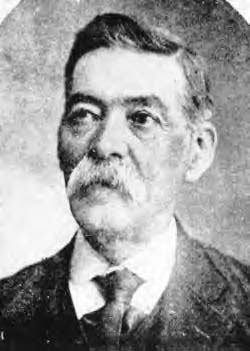
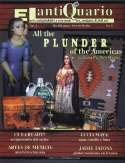 Hello, We publish a bilingual magazine on Mexican art, antiques and folk art called
Hello, We publish a bilingual magazine on Mexican art, antiques and folk art called

 From
Valiant warrior to saint
From
Valiant warrior to saint 
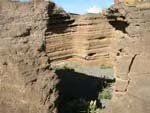 El Museo y Parque Arqueológico Cueva Pintada constituye una audaz
propuesta museística en torno a uno de los yacimientos arqueológicos más
representativos de la isla de Gran Canaria. En ella, conservación,
investigación y difusión se aúnan para ofrecer a la sociedad un espacio
en el que la presentación del pasado prehispánico procure el disfrute
emocional e intelectual de todos los visitantes.
El Museo y Parque Arqueológico Cueva Pintada constituye una audaz
propuesta museística en torno a uno de los yacimientos arqueológicos más
representativos de la isla de Gran Canaria. En ella, conservación,
investigación y difusión se aúnan para ofrecer a la sociedad un espacio
en el que la presentación del pasado prehispánico procure el disfrute
emocional e intelectual de todos los visitantes.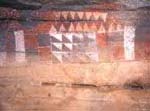 yacimiento que ha permitido recuperan las
formas de vida prehispánica. Pero al mismo tiempo, este enclave ocupa un
papel esencial a la hora de adentrarse en esa etapa final que se abre a
partir del siglo XIV, momento en el que llegan las primeras expediciones
europeas a la isla y que culminan con la conquista e incorporación de ésta
a la Corona de Castilla.
yacimiento que ha permitido recuperan las
formas de vida prehispánica. Pero al mismo tiempo, este enclave ocupa un
papel esencial a la hora de adentrarse en esa etapa final que se abre a
partir del siglo XIV, momento en el que llegan las primeras expediciones
europeas a la isla y que culminan con la conquista e incorporación de ésta
a la Corona de Castilla.